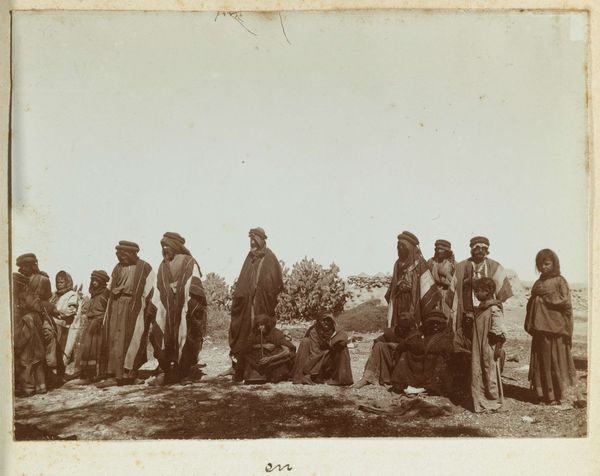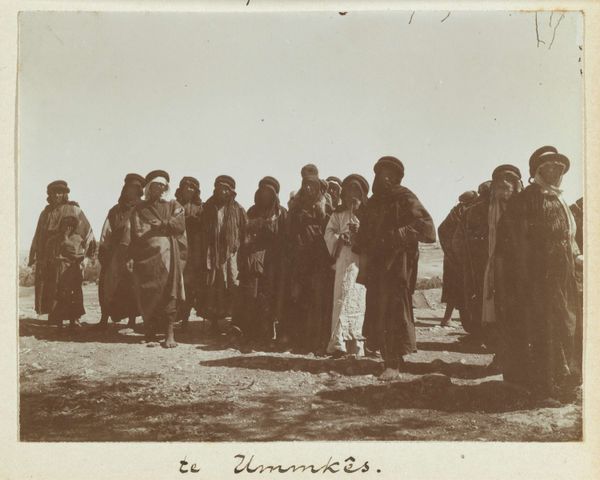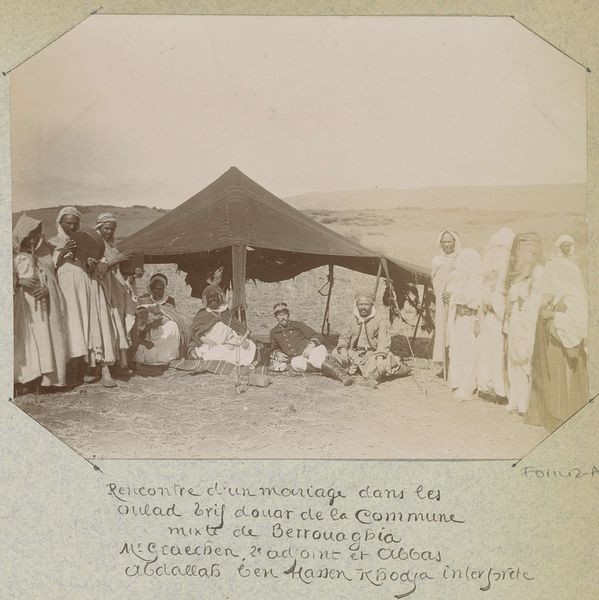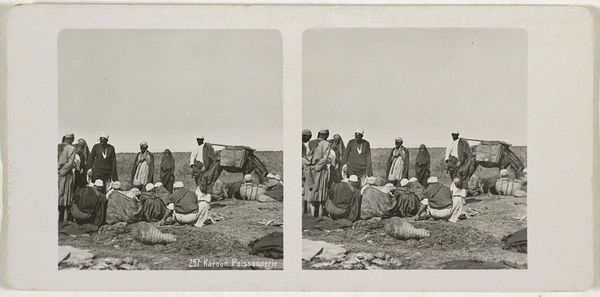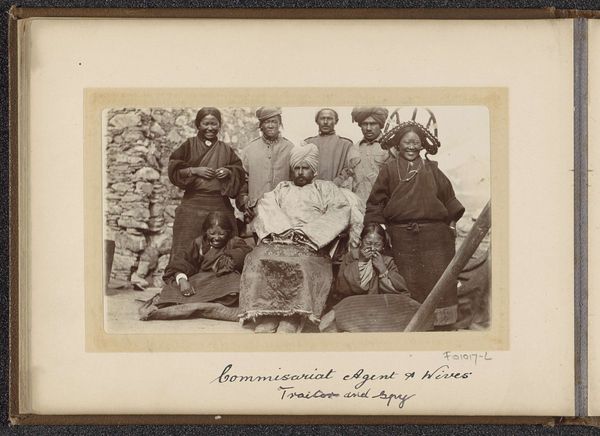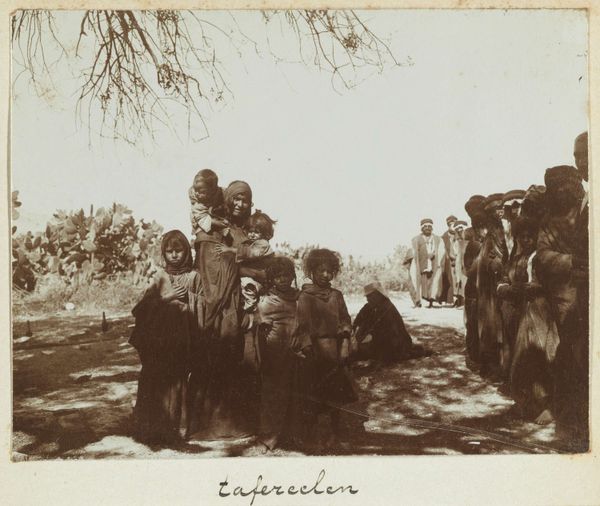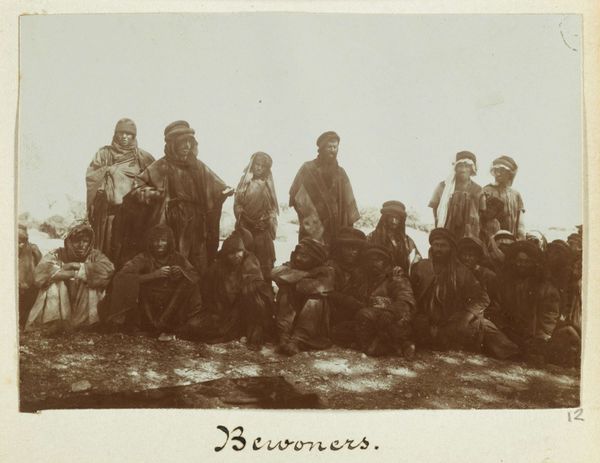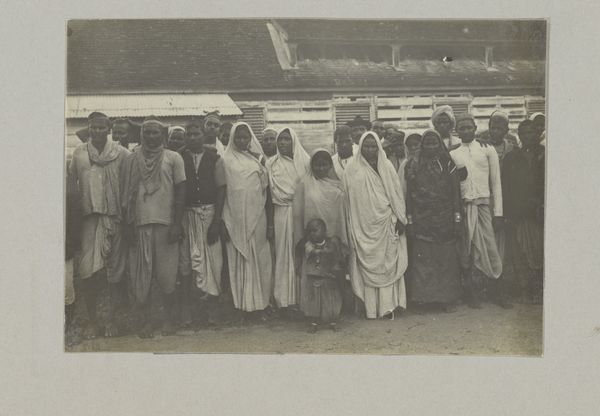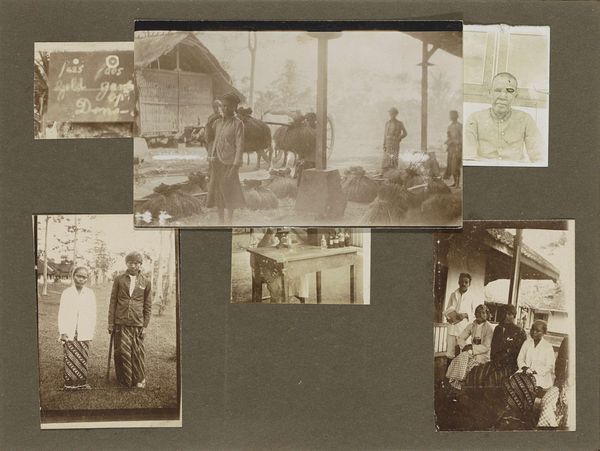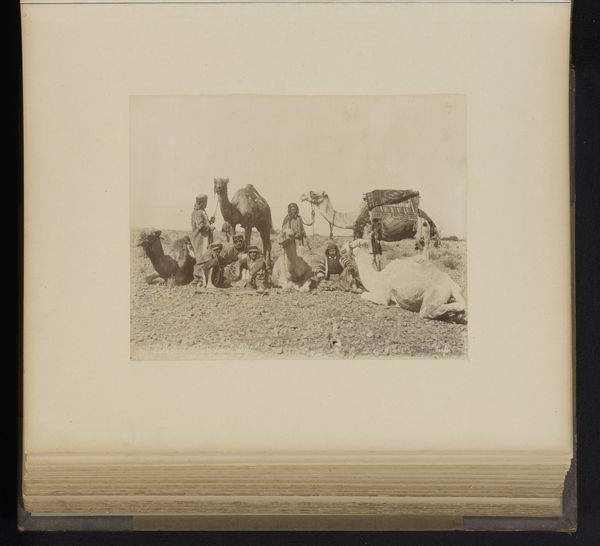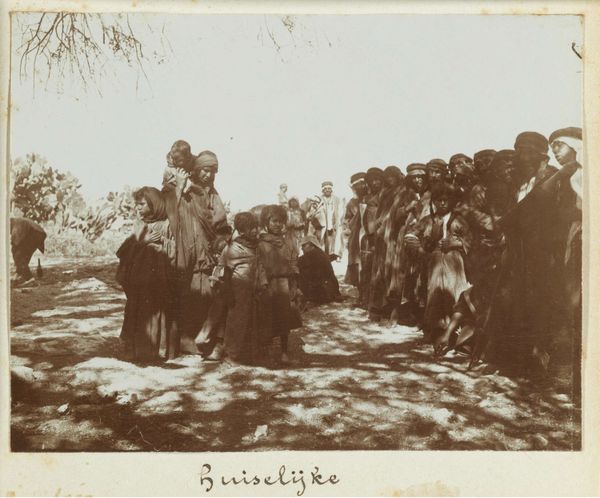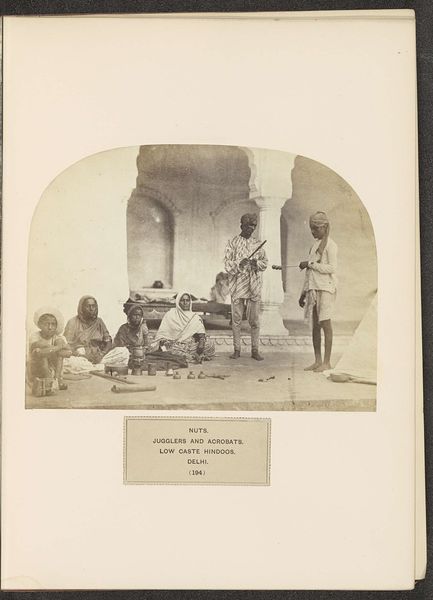
photography, albumen-print
#
portrait
#
african-art
#
landscape
#
photography
#
orientalism
#
genre-painting
#
albumen-print
Dimensions: height 86 mm, width 116 mm
Copyright: Rijks Museum: Open Domain
Curator: This is an albumen print from 1896 entitled “Mannen en geiten op een markt in Beni bou Yacoub (Algerije),” or “Men and Goats at a Market in Beni bou Yacoub (Algeria)," captured by the photographer Marotte. It immediately strikes me how staged this “genre” scene appears. Editor: Staged is a polite word. The tonality alone seems unreal. Look at how the limited contrast flattens the composition and softens details to create a scene washed in sepia tones—almost dreamlike in its abstraction of reality. Curator: Indeed, it conforms to the 19th-century European appetite for Orientalist imagery. Although supposedly a glimpse into daily life, its subjects are positioned to satisfy European viewers' preconceived notions about Algeria. Editor: Yet there is something intriguing in its balance, or lack thereof. The clustering of figures on both sides creates an almost symmetrical frame, while the chaotic placement of goats in the middle adds a layer of textural dynamism, disturbing the serene portrayal. Curator: That dynamism, in some sense, underscores the power imbalance inherent in colonial photography. Here is Marotte, presumably European, curating and capturing a constructed scene involving Algerians for Western consumption. The very act of photographing turns these individuals into exotic subjects for display. Editor: If we consider only the picture's elements and their interactions, we see the goats as more than props; their varying shades break the white robes monotony and animate the ground. It is a well considered pictorial construction, after all, no matter its history. Curator: Of course, one must acknowledge its formal qualities; however, it's crucial to look critically at why and how this image came to be. Understanding the circumstances of its making informs our interpretation. Editor: Perhaps so, yet, for me, it still stands alone, a beautiful yet eerie rendering, one to be interpreted via multiple avenues, as each offers particular insights into it as art. Curator: A fruitful discussion indeed; each aspect informing the other and widening our understanding.
Comments
No comments
Be the first to comment and join the conversation on the ultimate creative platform.
